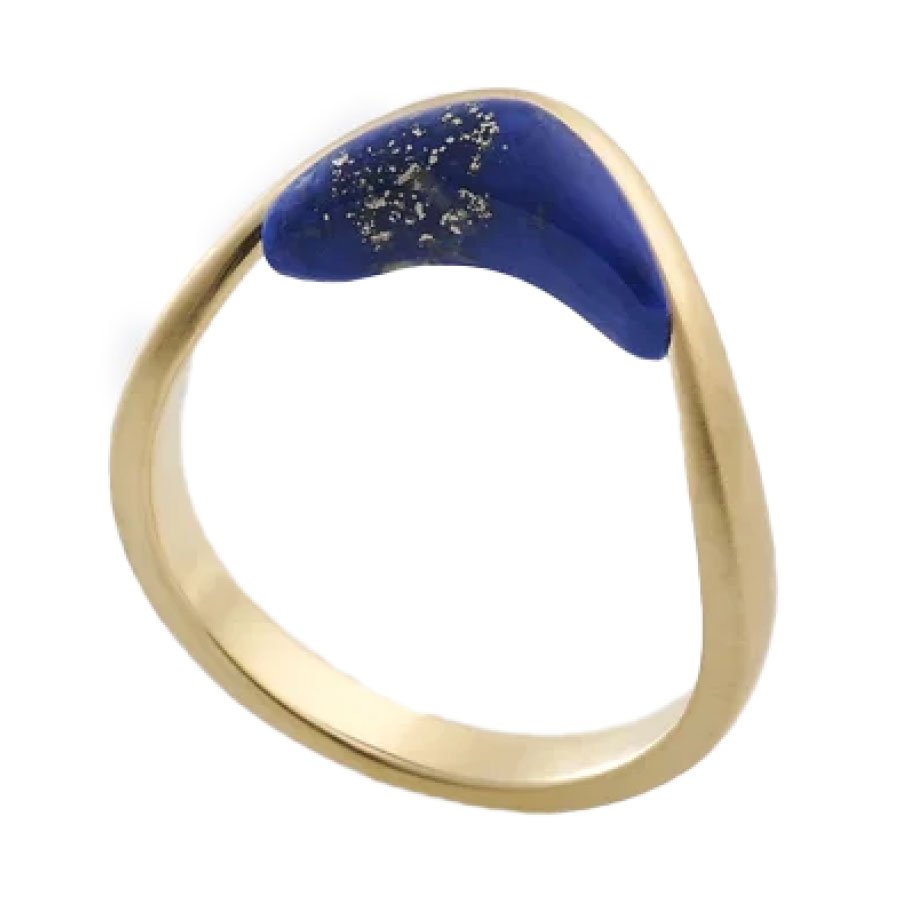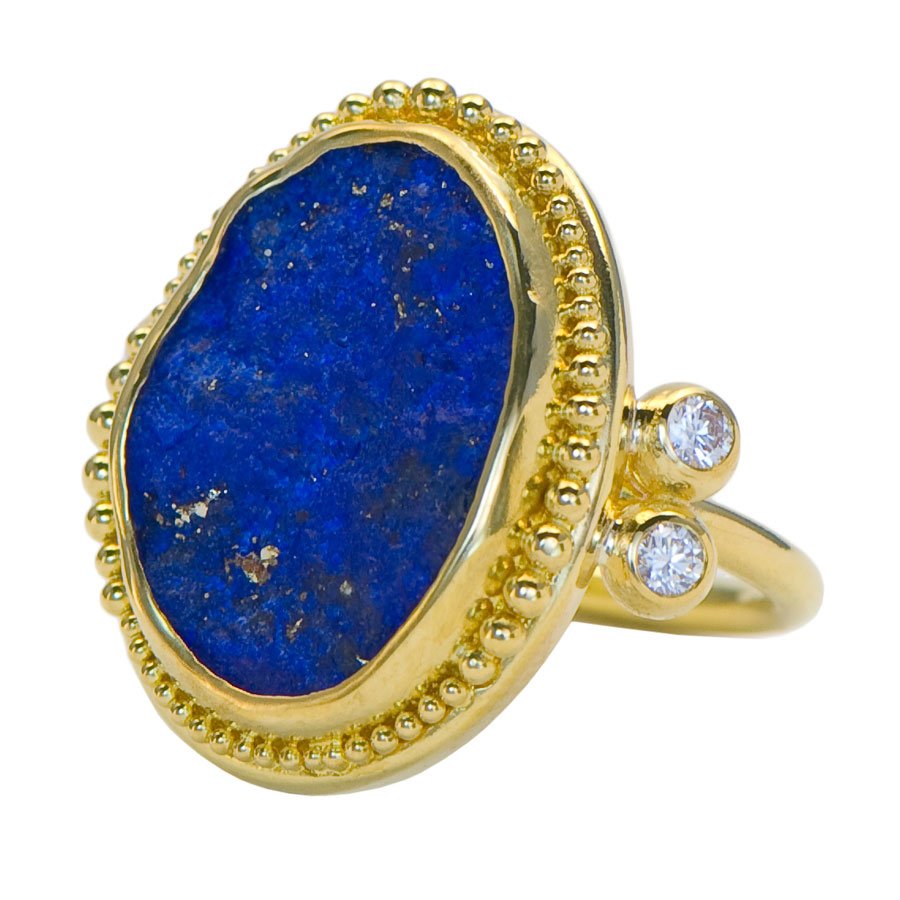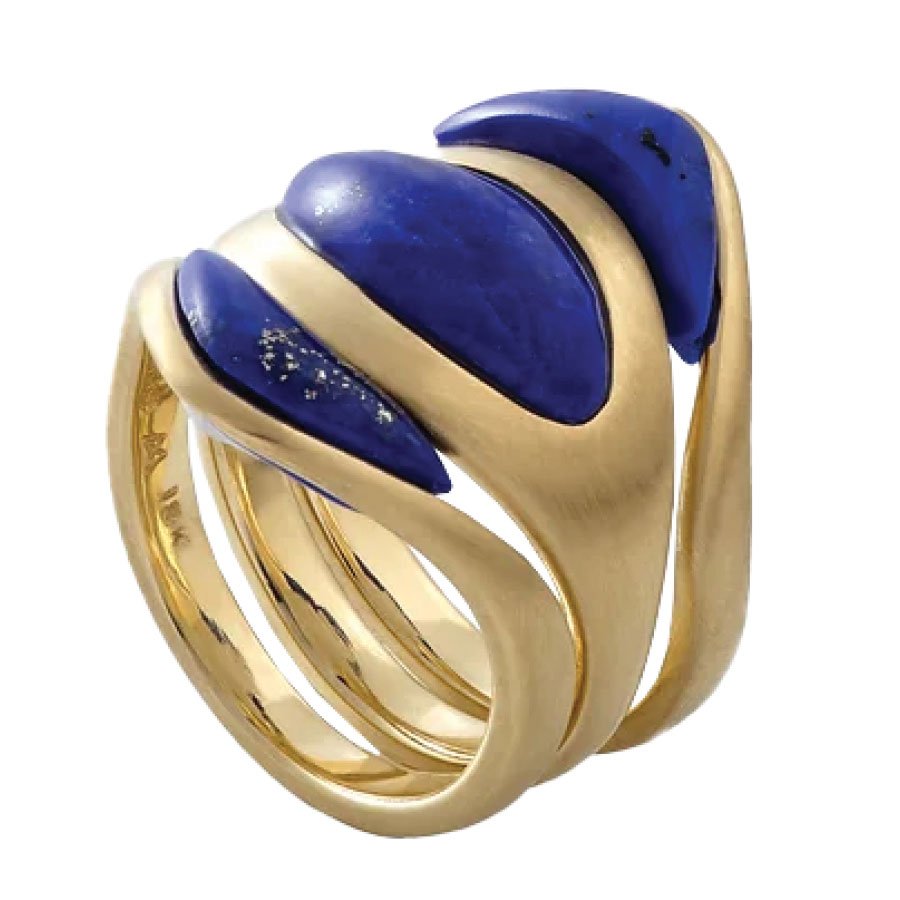LAPIS LAZULI JEWELRY WITH INTENTION AND CONNECTION
Why is LAPIS LAZULI special?
This vibrant blue stone has a culturally rich history, from playing a role in an ancient Sumerian myth of Inanna, the goddess of love, to being worn by Cleopatra as jewelry and finely ground eye shadow!
Get the skinny on lapis lazuli and shop a curation of jewelry, thoughtfully designed by women…

SHOP
DESIGNER LAPIS LAZULI JEWELRY
What are the metaphysical properties of lapis lazuli?
Lapis Lazuli attracts clarity, creativity, and intellectual acuity.
Just as our ancient ancestors believed gemstones were imbued with special properties, such as protection, wisdom, or courage, today we are empowered by the metaphysical properties of gemstones to manifest what we wish to create.
You may be interested in our guide to manifest your intentions with gemstones and jewelry!
THREE THINGS TO KNOW ABOUT LAPIS LAZULI:
1. A global sensation in ancient Mesopotamia, Egypt, China, Greece, and Rome
2. Mined in present-day Afghanistan since 700 BC
3. Historically it was ground into powder for paint, medicine, and even eyeshadow
Smitten yet?
Whatever lapis lazuli jewelry may symbolize for you today, we’ve outlined points to help you understand value and what to ask about lapis lazuli jewelry.
Seeking personalized shopping support when investing in your jewelry collection?
Get expert guidance for jewelry with intention and connection!
JEWELRY THAT REFLECTS YOUR STORY
Our hand-picked curation of coveted lapis lazuli jewelry will elevate your style and ensure you feel confident, seen, and taken seriously.
As your fine jewelry guide, I help you select pieces that tell your story and amplify your inner power, or select a memorable jewelry gift for someone you love!
Discover how I helped a client find a birthday gift for his partner… read the story here.
The market prefers an intense medium to dark blue, with violet undertones. Of course, the more blue the material is with little to no visible inclusions, the more valuable it is.
Inclusions can appear as white streaks of calcite or flecks of golden pyrite.
Where is lapis lazuli found?
Since antiquity, lapis lazuli has been mined in Afghanistan - where the most desirable material is found.
Deposits can also be found in Chile, Siberia, Myanmar, and even North America (California and Colorado).
What does ethically and sustainably sourced jewelry mean?
Women and men at the forefront of this global conversation may practice it differently depending on their region, but there is a shared ethos: responsible sourcing.
This encompasses traceability, conflict-free, protecting people, their skills, and the environment - be it land or sea.
The jewelry you choose can meaningfully support climate action and UNSDGs. You can discover more about his topic here.
Lapis can be dyed or treated with wax or oil, improving the color or luster of the surface.
For some gemstones it is an acceptable practice (emerald) and for others it is something to avoid (opal). Examples can be heat treatment, irradiation, bleaching, and fracture/cavity filling and these should always be disclosed.
On the topic of treatment of any kind with any gemstone, knowledge is power because it always impacts value.
The Mohs scale of hardness is important to consider when choosing a particular stone for a particular kind of wear.
It is the degree of mineral “hardness”, measured by the resistance which a smooth surface offers to abrasion: 1 (soft) to 10 (hard). For example, an 8 will scratch a gemstone that is a 7 or below. Simply put, the softer the material, the more aware you need to be about wearing it in jewelry that may be exposed to more wear.
Lapis lazuli, while still in the hard range, is a “5” - “6”. As it is more susceptible to damage with accidental bumps, choosing kinds of lapis lazuli jewelry (i.e. necklaces or earrings) that will encounter less contact with harder surfaces is a good option, as are cocktail rings. Lapis lazuli is not the most durable gemstone for an everyday ring unless it is thoughtfully designed to really protect it.
Because quartz is a “7” on the Mohs scale (harder than lapis lazuli) and can be present in common dust, be sure to wash lapis lazuli jewelry under warm water prior to wiping off dust to prevent scratching.
The MOHS SCALE:
How hard is LAPIS LAZULI?
on the soft side - wear with care
How to care for lapis lazuli jewlery
A few jewelry care basics can keep your pieces looking their best, avoid damage and loss of gemstones.
WEAR: When dressing for day or night, jewelry should be the last thing on and the first thing off. Contact with chemicals such as fragrance, hairspray, nail polish remover, household cleaners, and chlorine can harm jewelry. Remove jewelry when swimming, cleaning, gardening, or playing sports, as activewear can damage or loosen settings - resulting in the loss of stones.
CHECK SETTINGS AND STONES: Inspect jewelry before wearing it to check if the stones are chipped, loose, or rattle in settings.
CLEANING: All precious metals, gemstones, and pearls should be cleaned regularly, but require different care. For example, ultrasonic cleaners can shatter pearls or diminish the appearance of emeralds. For gemstones on the Mohs scale at 7 or above, a simple cleaning solution is warm water with mild soap and soft toothbrush. For those at 6 or below, replace the toothbrush with a soft cloth. Be sure the jewel is thoroughly rinsed and dry prior to storage. A soft polishing cloth will keep any precious metal looking its best.
STORAGE: Keep jewelry individually stored in a pouch or box to avoid dents, scratching, and tangles. Chemicals, humidity, and excessive hot/cold conditions can tarnish some metals (apart from high karat gold) and damage gemstones and pearls.
INSURANCE: For any jewelry of significant value, be sure to have it appraised, file any provenance and gemstone report in a secure place, and be sure to have it insured.
ALL THE BRILLIANTS’ INTENTIONAL JEWELRY CONCIERGE
This personalized shopping and styling service helps you:
edit and reconnect you with what may already be in your jewelry box
advise you on pieces that address your wardrobe needs
guide you in selecting jewelry gifts for someone you love
source responsibly sourced gemstones for bespoke jewelry
Let’s connect for intentional jewelry that brings what’s inside out!





















